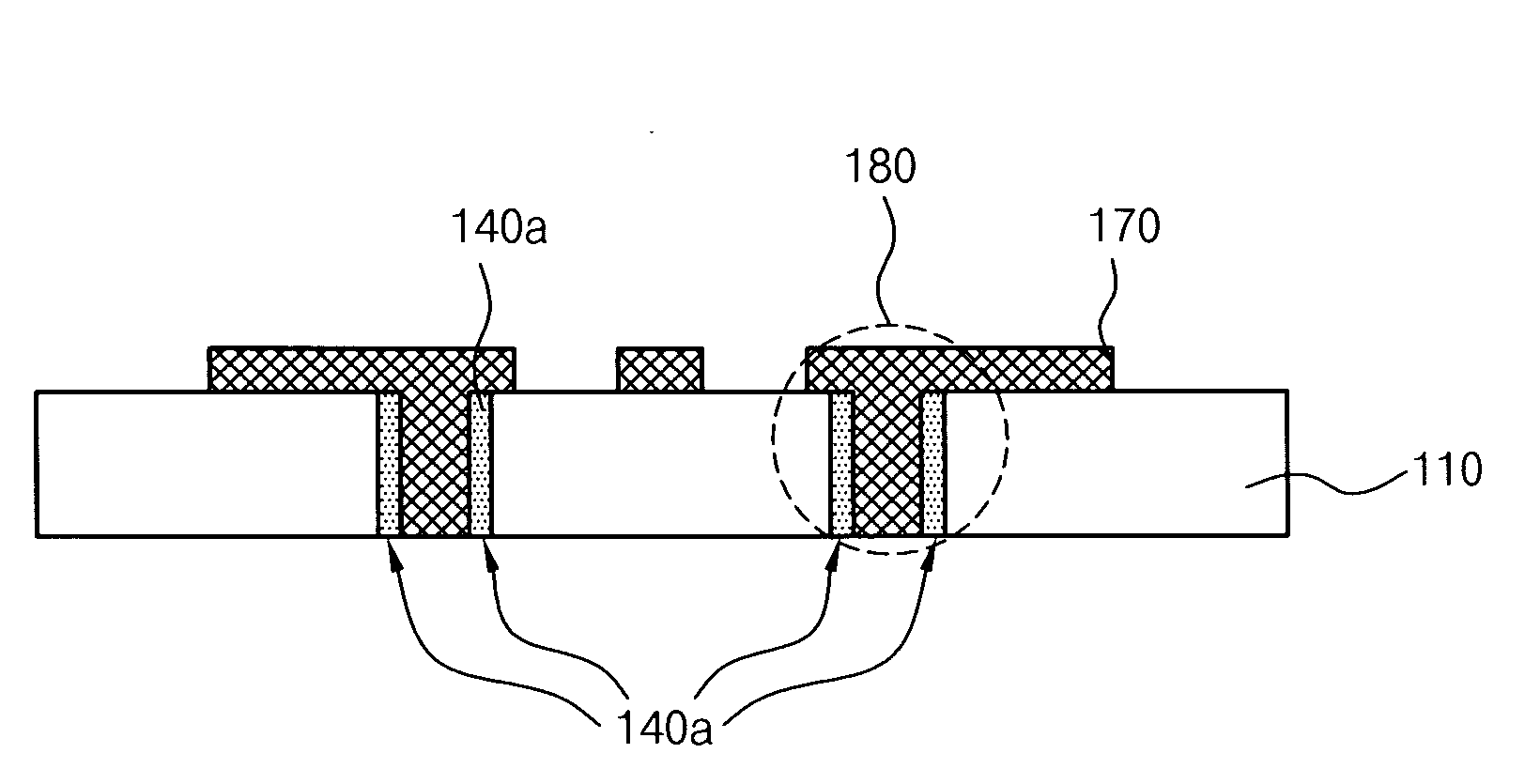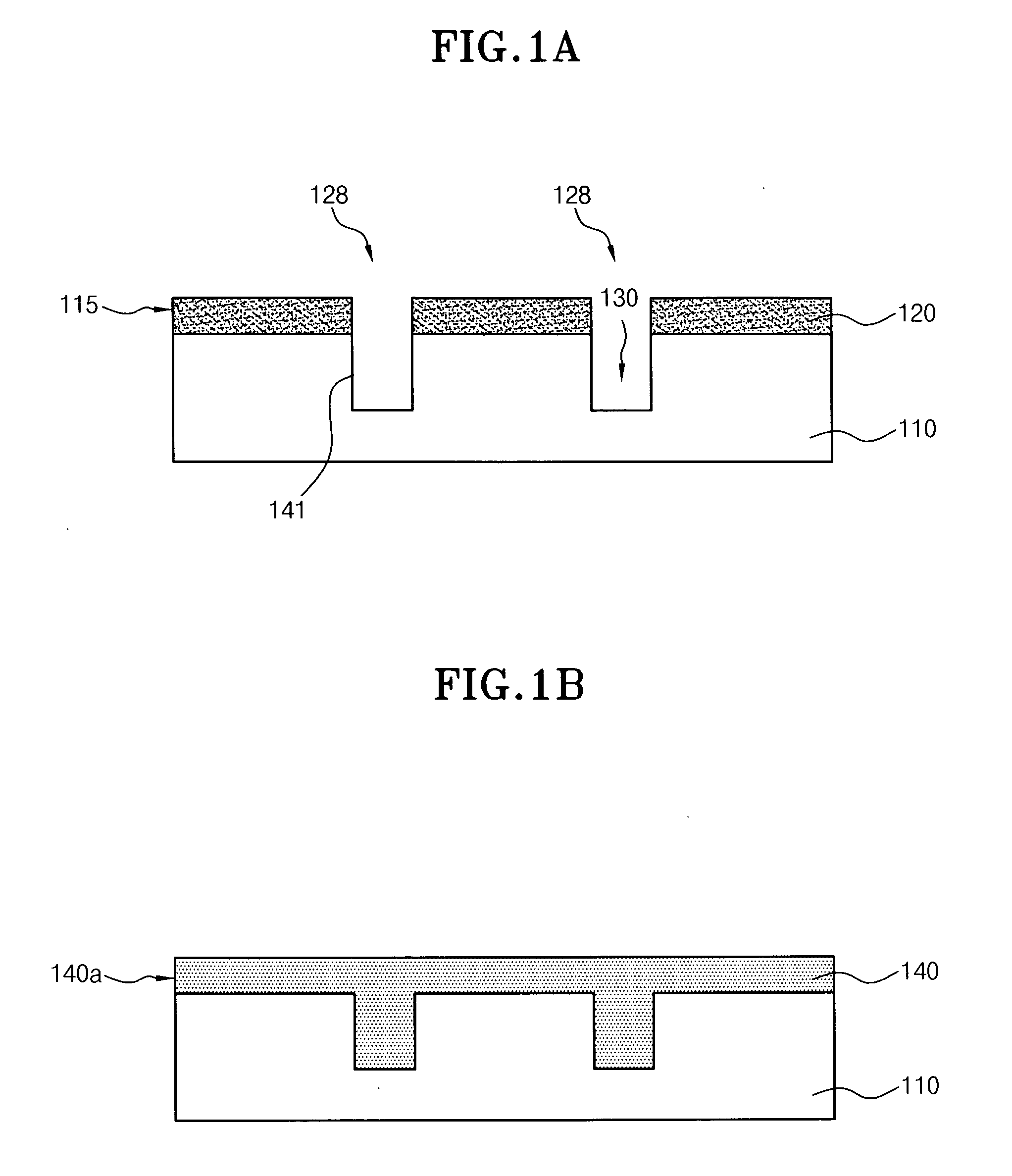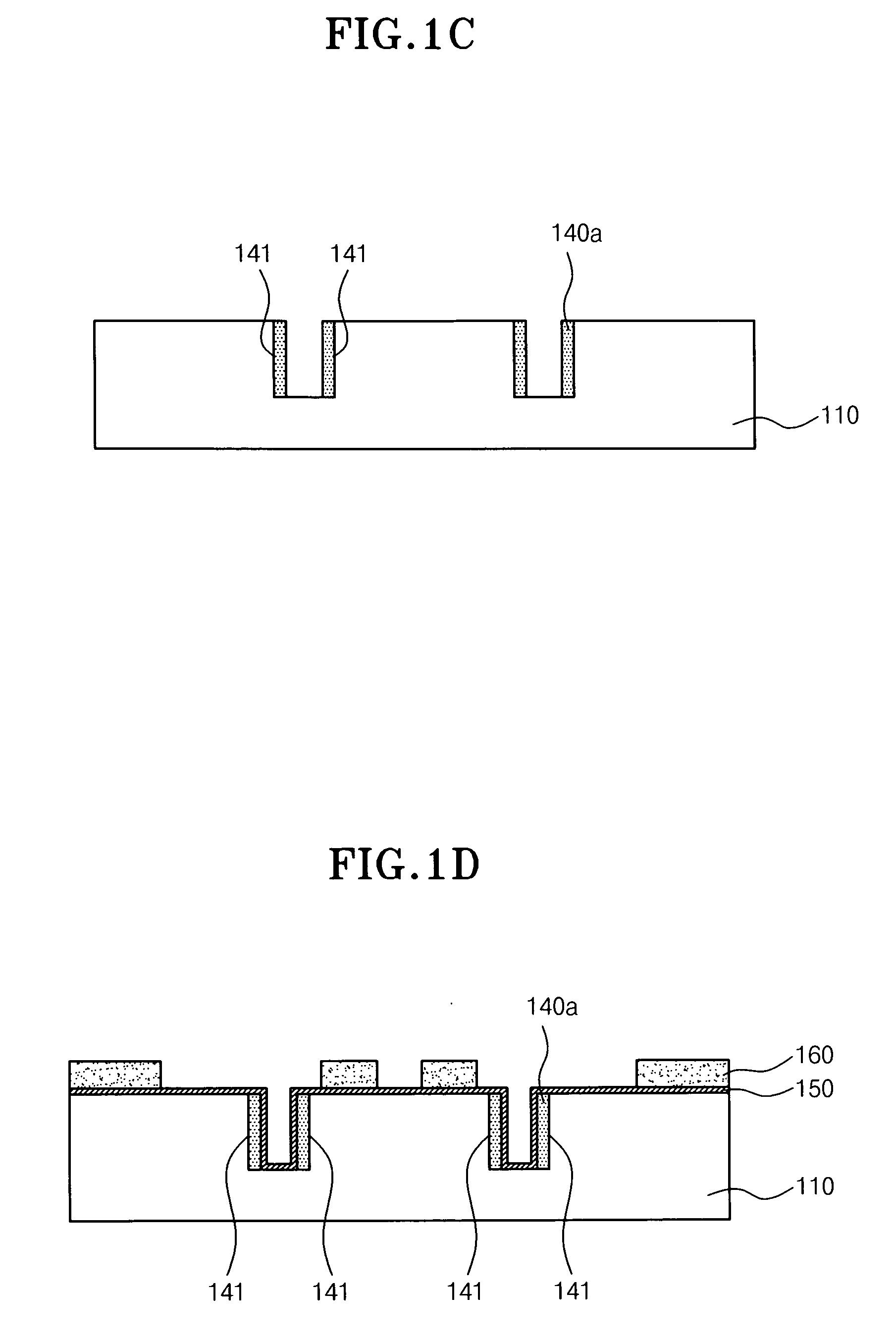Through-silicon via and method for forming the same
a technology of throughsilicon via and stacked chips, which is applied in the direction of semiconductor devices, semiconductor/solid-state device details, electrical devices, etc., can solve the problems of difficult to obtain uniformity and low roughness, difficult to secure a thickness for obtaining satisfactory insulation characteristics, and high cost of oxide layer formed through high-temperature dry oxidization and wet oxidization processes or nitride layers. achieve the effect of reducing the cost of forming
- Summary
- Abstract
- Description
- Claims
- Application Information
AI Technical Summary
Benefits of technology
Problems solved by technology
Method used
Image
Examples
Embodiment Construction
[0023]In the present invention, a relatively flexible polymer which adheres to both the surface of a silicon through-hole but also to a metal or metallic substance that is deposited over the polymer coating a silicon surface, provides a flexible, mechanical interface between silicon and a metal or metallic filler, which can accommodate variations in thermal expansion coefficients between silicon and the metal or metallic substance to provides improved mechanical compliance. The polymer also forms an insulation layer between silicon and an electrolytic or metallic substance. Such a polymer is referred to herein as a polymer that has “mechanical compliance” or which is “mechanically compliant.” That is to say, in the present invention, after filling a vertical hole defined for forming a vertical connection with liquid polymer, through patterning the polymer to a desired shape using a photolithography process, an insulation layer is formed.
[0024]In this case, since the liquid polymer i...
PUM
 Login to View More
Login to View More Abstract
Description
Claims
Application Information
 Login to View More
Login to View More - R&D
- Intellectual Property
- Life Sciences
- Materials
- Tech Scout
- Unparalleled Data Quality
- Higher Quality Content
- 60% Fewer Hallucinations
Browse by: Latest US Patents, China's latest patents, Technical Efficacy Thesaurus, Application Domain, Technology Topic, Popular Technical Reports.
© 2025 PatSnap. All rights reserved.Legal|Privacy policy|Modern Slavery Act Transparency Statement|Sitemap|About US| Contact US: help@patsnap.com



